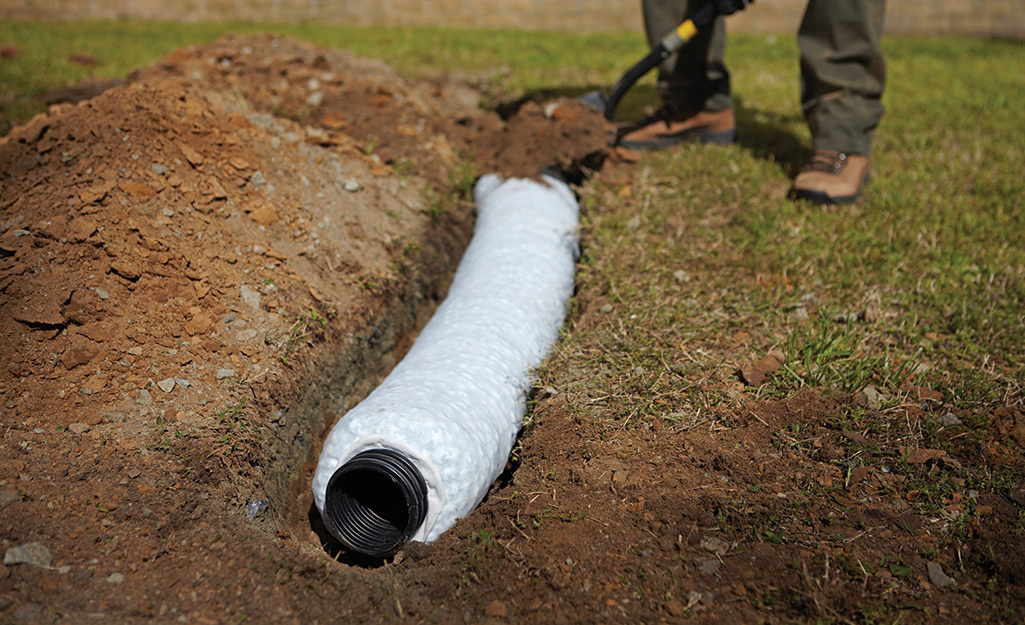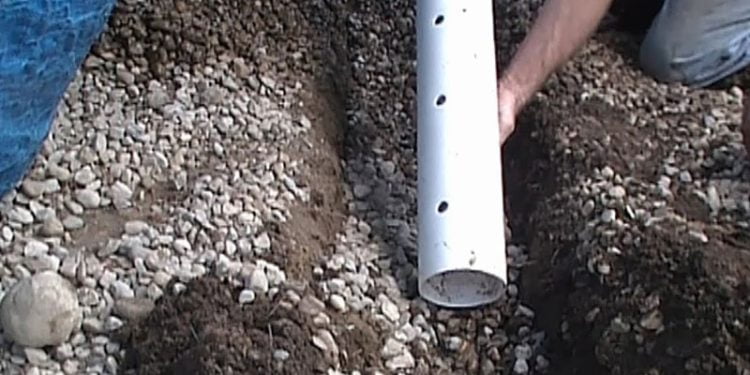
A French drain is a very effective system for diverting water from foundations, retaining walls, and drainage ditches. From the point of view of modern construction, this concept implies both draining the territory and diverting the water from foundations, underground structures, and communications. Drainage is also important for those who are engaged in gardening – excess moisture on the site not only creates dirt but can also negatively affect the growth of plants and even destroy them.
Drain systems
Surface drainage systems are used to effectively divert meltwater, rain, and flood from the territory. The collected water is diverted to the storm sewer. In addition to surface drainage systems, the site must be equipped with a deep (underground) drainage system that lowers the groundwater level. A deep drain is necessary in cases where the site is located in a lowland or might be swampy. People use it for buildings located near natural reservoirs as well as if the space under the house is supposed to be in use (basements, ground floors, garages, etc.). Through pipes laid in underground channels (drainage), excess groundwater is diverted outside the site, to a collector or a special well. Only owners of high-lying areas with well-draining sandy soils can afford to abandon the deep drainage system when the groundwater level is below 1.5 m.
Surface and underground drainage systems solve different tasks and are not mutually exclusive. Storm sewers and deep drainage are laid in parallel, usually at the same slope. Some designers consider the connection of these two systems unacceptable, as this can lead to an even greater rise in groundwater and flooding of basements. Others say a deep drainage collector is required, taking into account the additional load from the surface drainage system.
There are two basic ways of surface drainage: point drainage and linear drainage. Point drainage is used to collect local water sources, while the purpose of linear drainage is to organize the collection of precipitation from a significant area. The combination of these two systems helps to reduce the length of storm sewer channels and the number of earthworks.
How It Works
French drain works in the following way:
- A trench is dug (approximately 45-50 centimeters deep and 30 centimeters wide). This is the optimal size as there is no point in digging too deep. The width of the trench should be slightly larger than the diameter of the pipe.
- It’s better to put a geotextile lining on the bottom of the trench. This stage, in general, can be neglected, but experts advise doing it. Landscape fabric needs to align the entire trench, pulling up the edges. You can even wrap the whole pipe, but only in one layer, otherwise, the water will pass badly.
- A layer of stones is laid on the geotextile – just to fill in the irregularities and make a “pillow” for the pipe.
- A pipe is laid on the layer of stones, which should be tight to them. According to experts, it’s easier to work with flexible pipes, but, again, it’s possible to lay a pipe with drain holes along the stone bottom.
- The trench around the pipe needs to be filled with stones and carefully closed from the sides. It’s impossible to leave any space for movement – the pipe shouldn’t move, otherwise, kinks may appear. A filling is also done from above to the very top of the trench. However, if you decide to hide the drainage completely with a layer of soil, you need to leave a place for it above the stones. However, this stage is optional.
A french drain system serves as a drain, designed to remove water from courtyards and gardens. Water from the surface through the stones freely enters the pipe with holes and is discharged from the site. There are also stones under the pipe, and there is space for water to flow. At the same time, there is no danger for those who walk along it.
While installing a drainage system, take into account the following tips:
- Place a water collecting barrel at the end of your drainage system to collect rainwater for use in the garden.
- Expected that after digging, you will have a large amount of land. Before you start the project, decide what you will do with it.
- If you plan to dig a long trench, consider renting specialized equipment to cope with it faster.


